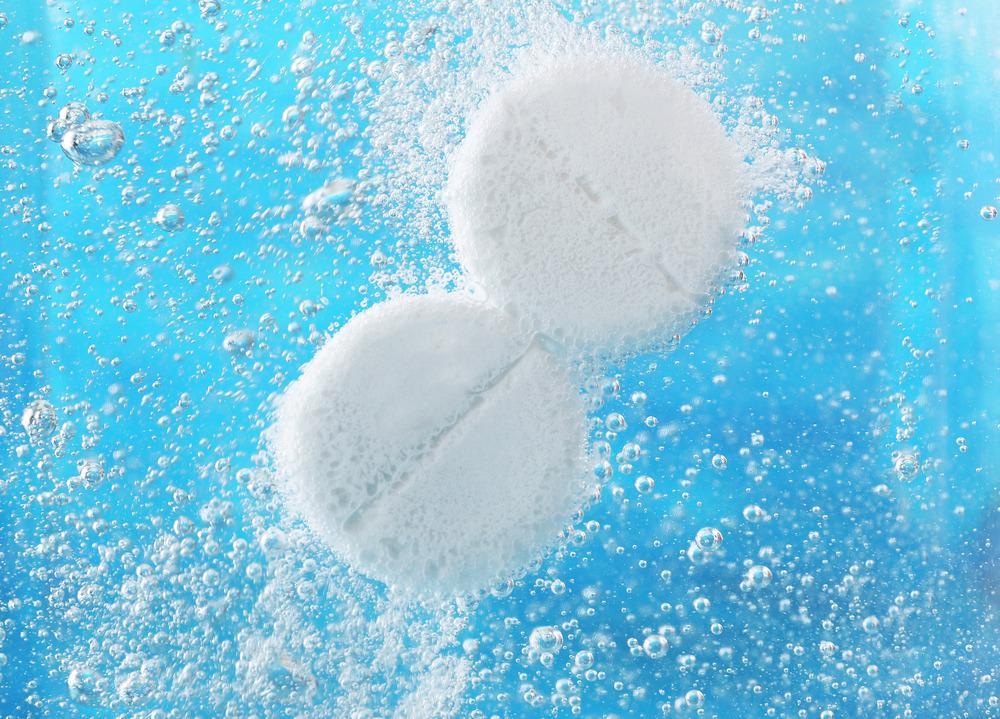A paper published in the Journal of Environmental Chemical Engineering has developed a novel hybrid photocatalyst (AgBr/PSGCN-100) that addresses current challenges in research into finding affordable, non-toxic, chemically inert, and photostable catalysts. The authors behind the study have demonstrated the efficacy of this unique photocatalyst for removing micropollutants from pharmaceuticals such as ibuprofen in wastewater.

Study: Decontamination of Ibuprofen micropollutants from water based on Visible-light-responsive hybrid photocatalyst. Image Credit: Africa Studio/Shutterstock.com
Safeguarding Clean Water Supplies
Currently, one of the key challenges globally is improving and safeguarding the supply of affordable, clean water for the world’s growing population. According to the World Health Organization, one-third of the global population lacks access to contaminant-free water sources for drinking and sanitation. Factors such as increasing industrialization, environmental pollution, reservoir depletion, climate change, and demographic growth place increasing stress on fragile water supplies, affecting billions.
Environmental Pollution from the Pharmaceutical Industry: A Growing Global Challenge
Regarding environmental pollution from industrial activities, contamination of water supplies by the pharmaceutical industry is a growing concern. Problems associated with pharmaceutics pollution include environmental persistence and bioactivity in both humans and animals. Over recent years, the problem with environmental contamination from the pharmaceutic industry has increased, facilitating the necessity of effective remediation solutions.
Improvements in analytical techniques such as gas chromatography, liquid chromatography, and mass spectrometry have improved the detection of pharmaceutical micropollutants from drugs such as anti-inflammatory treatments and antibiotics, and these micropollutants have been detected worldwide. Contaminants have been detected in groundwater, sewage treatment plants, surface water, and industrial wastewater. Pharmaceuticals and their transformation products have been detected in 71 nations.
The growth of pollution from the pharmaceutical industry is a threat to human and animal health. Antibiotics are an issue due to the increased detection of drug-resistant microbes in sewage. Improper disposal and limited metabolism of drugs by humans and animals are both factors that have led to the proliferation of micropollutants in the environment. Drugs such as antidepressants, anticonvulsants, hormones, and beta-blockers have all been detected in worrying amounts.
Pharmaceutical micropollutants are difficult to detect due to their low concentration. The issue is compounded by the design of traditional wastewater treatment plants. Typically, they are not designed to detect, filter, and treat these types of pollutants and there is a lack of environmental quality standards and discharge guidelines.
Ibuprofen Micropollutants
Ibuprofen, which belongs to the class of non-steroidal anti-inflammatory drugs, is one of the most manufactured pharmaceutical products in the world. It is especially persistent due to its stability in aqueous environments, low volatility, long half-life, and high mobility. Negative effects of ibuprofen contamination include accumulation in fish, disturbance to cnidaria and Amphipoda, and impact on human embryonic cells. Removal of ibuprofen is inefficient and even a small concentration of ibuprofen can have strong negative impacts.
Using Photocatalysts to Remove Ibuprofen Micropollutants
The development of photocatalysts to efficiently remove pharmaceutical pollutants is the focus of the paper published in the Journal of Environmental Chemical Engineering. Ibuprofen was selected by the authors as the micropollutant for removal using the novel photocatalyst. Photocatalysis as an advanced oxidation process has emerged as a key research area in removing environmental pollution and for this type of pollutant in particular (also known as bio refractory contaminants).
Further Reading: Produced Water Treatment Using Microalgae
Semiconductor photocatalysts work by taking advantage of continuously generated oxidative radicals. These radicals are highly reactive and efficiently degrade organic materials under visible light or ultraviolet irradiation. Recently reported materials that can be used for this application include metal oxides such as ZnO and TiO2 and metal-free materials such as graphitic carbon nitride. Another class of photocatalysts are heterojunction photocatalysts.
The authors behind the study have successfully synthesized a heterojunction photocatalyst for ibuprofen micropollutant decontamination. The degradation of ibuprofen was theorized to be due to the presence of superoxide radicals, holes and hydroxide radicals, and the probable degradation pathways include direct decarboxylation, ring-opening, oxidation, and demethylation.
Complete degradation of different concentrations of ibuprofen in samples was attained rapidly, with concentrations of 5mg/l degraded after being irradiated for just 60 minutes. At 15mg/l ibuprofen, 90% degradation efficiency was achieved within 100 minutes of visible light irradiation. A further observation was a reduction in degradation efficiency in samples with extreme acidic or alkaline pH. Using TEM to analyze the novel photocatalyst, formation of a heterostructure which the authors believe enhances photocatalytic activity was observed.
The findings of the study indicate the ability of the novel AgBr/PSGCN-100 heterojunction photocatalyst to remove ibuprofen micropollutants from water, along with derivative products and other organic compounds.
Further Reading
Liu, H et al. (2022) Decontamination of Ibuprofen micropollutants from water based on Visible-light-responsive hybrid photocatalyst [online] Journal of Environmental Chemical Engineering | sciencedirect.com. Available at: https://www.sciencedirect.com/science/article/abs/pii/S2213343722000276?via%3Dihub
Disclaimer: The views expressed here are those of the author expressed in their private capacity and do not necessarily represent the views of AZoM.com Limited T/A AZoNetwork the owner and operator of this website. This disclaimer forms part of the Terms and conditions of use of this website.